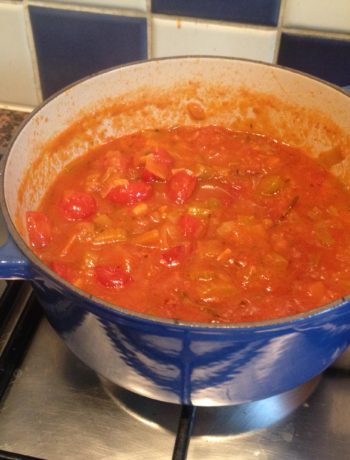Is there a more traduced and reduced yet basic foodstuff than bread? How can we possibly have allowed this staff of life to have been subjected to the degrading influence of the Chorleywood Process and how can we, as intelligent consumers, have been duped into believing that something that comes in a plastic wrapper and that keeps for weeks, is bread?
I will admit, I fell for it. Before I began to question seriously what I was actually eating, in terms of the ingredients of the food I was buying, I bought bread in supermarkets usually thinking about how long the loaf might last and would it freeze OK. Now, I am not going to launch into an assault on supermarkets; they are necessary and in any event, if we are naive consumers, we will buy badly. It is our responsibility to buy well – not just what the supermarket has on offer that week. There is good bread to be found in supermarkets, but it’s never on the shelves at your eye line: you will need to bend down or look up to find it.
You can find Crank’s Wholemeal and Poilane Sourdough in UK supermarkets and no, it won’t be the cheapest bread BUT it will not have fillers, colours or preservatives in it and best of all, it tastes wonderful! There is however, a “but” and that is cost. At the time of writing, a 450g loaf of Poilane Sourdough is £3.00 and a Cranks Organic Wholemeal at 800g is £1.55. Both of those are expensive and whilst worth it, not perhaps sustainable dependent on one’s budget.
There are alternatives in supermarkets and we all need to become avid label readers to avoid some of the ingredients that appear in some loaves. I kid you not when I say the following are used regularly in bread in this country: Calcium Propionate (to inhibit mould growth), Soya Flour, “Vegetable Oils”, Emulsifiers…….
If a loaf needs a mould inhibitor, to me that says something quite profound about the product; neither of the loaves mentioned above use them and it doesn’t sit easily with me to eat it. I have read of studies linking it to damage to stomach lining, adverse behavourial effects on children and migraines. I make no claims to be a medic but for me, if I don’t need to eat an additive, I don’t.
Soya Flour: any person knows that this has mixed press. I am not going to get into an argument for which I am manifestly not qualified to arbitrate, except to say that because of my medical history, I avoid Soy in all forms.
“Vegetable Oils”: nothing too horrid here, unless this is hiding the use of Palm Oil, which from an environmental perspective, can be a disaster. This bothers me, so I have researched this topic and have elected to avoid it wherever possible and where it is needed, try to use products with sustainable Palm Oil sources.
Emulsifiers: As far as I can see, these exist to soften a dough and/or harden a dough. Really?
So what on earth are these things doing in bread? It’s because as an ill-informed public in 1960’s, the vast majority of people in the UK just wanted cheap food. The Chorleywood Process was born and our daily bread went downhill fast after that. No wonder that our bread became, by and large, the laughing stock of Europe. If you want a blow by blow account of the Chorleywood Process, I recommend Elizabeth David’s excellent book “English Bread and Yeast Cookery”; it is worth reading if only to understand that we should never allow the wool to be pulled over our eyes in such a way again.
Mercifully, there were enough people left who did value real bread and thanks to them, we now have the choice to buy real bread, made from good flour, yeast, water, maybe a little honey or sugar, and a fat with integrity. The wonderful RealBreadCampaign.org is a great place to start looking for your local baker and then please, please support them! Good bread isn’t cheap, but I come back to the fact that few things are more influential on our everyday health than the food we eat.
These fabulous people also support home baking and I have been experimenting with an everyday loaf that can fit into a busy life. I started with Doris Grant’s Wholemeal Loaf, adjusted it via the Ballymaloe Brown Yeast Bread recipe and have finally landed on a version that suits us. I make this every week, and it’s easy to double up the quantity for a bigger family. Don’t be deterred by the use of fresh yeast: I buy mine from ocado.com and freeze it. Please don’t think this is onerous or any way difficult; it really isn’t but there is one problem: it is far too easy to eat too much of it! Making this bread doesn’t involve bouts of kneading or baby-sitting bowls of dough (although that can be very satisfying sometimes); it’s hard to believe something that tastes so good can be so simple to make.
If Edoardo and I are exercising (some) self discipline, this keeps well in an airtight tin (I use a cake tin) for several days. It also freezes well but doesn’t seem to last so well after thawing, but that isn’t a problem for us.
Honestly, this is so simple, when I began to make it, I was astonished that it fitted so well into my busy life. I have also experimented with the ingredients and have added seeds to the mixture, replaced some of the wholemeal with granary or strong white (for a lighter loaf) and also made a half quantity with added walnuts. On the whole, I like the original – which also makes divine toast – and it comes in at about 84p per loaf!
SIMPLE WHOLEMEAL BREAD
Print RecipeIngredients
- 450g strong wholemeal flour
- 1 tsp salt
- 1 tsp honey
- 425 ml blood heat water
- 20g fresh yeast (non GM)
- sunflower or pumpkin seeds (optional)
- room temperature unsalted butter
- 1 x 1 kg/2lb loaf tin or any tin measuring about 12.5cm x 20cm
Instructions
Preheat the oven to 230 degrees C/210 degrees fan
Measure the flour into a large bowl
In a small bowl or jug, mix the honey with about 150ml of the water and crumble in the yeast. “Crumble” can be misleading as fresh yeast can be quite sticky, so do your best to add it in small pieces, rather than one lump
Leave in a warm place for up to 10 minutes, during this period, grease the tin lightly with the butter; it is possible to use sunflower oil, I just prefer butter
Check that the yeast is coming to life; it needs to be popping tiny bubbles to the surface and if it isn’t doing this, it doesn’t matter if it takes a few minutes longer to acquire the frothy head that is needed. If you are not seeing any movement, you might have dud batch of yeast; it does occasionally happen but in a year of baking this loaf, it’s happened only once to me
When you have a frothy head (no, when the yeast mixture has a frothy head…), pour into the flour along with the remaining 275ml of water and mix it up. Don’t mix until all the water is in, otherwise for some reason, it will go to lumps from which, in my experience, there is no way back!
The mixture should be too wet to knead but not too liquid.
Put directly into the greased tin and sprinkle with seeds, if wanted.
Cover with a clean tea towel (prevents skin forming) and leave to rise.
This can take between 10 - 25 minutes depending on the ambient temperature
Once the dough has risen almost to the top of the tin, put into the hot oven and give it 20 minutes
After that time, reduce to 200 degrees/180 degrees fan and leave it for 40 minutes
At 40 minutes, slip the bread out of the tin and knock on its bottom with your knuckles; it should sound distinctly hollow
If it doesn’t yet sound hollow, slip it back into the tin and give it another 5 minutes
If you want crisp crust all over the loaf, leave the loaf out of the tin for the last 10 minutes of cooking but omit this step if you want softer crust
A point on the rising stage, if you get absorbed in something else and forget about your loaf so that it rises to the top of the tin, it will slightly overflow the tin when you bake it. It will not affect the flavour of the main loaf, although you will have a “muffin top” on your loaf, which may become a bit too crisp.




